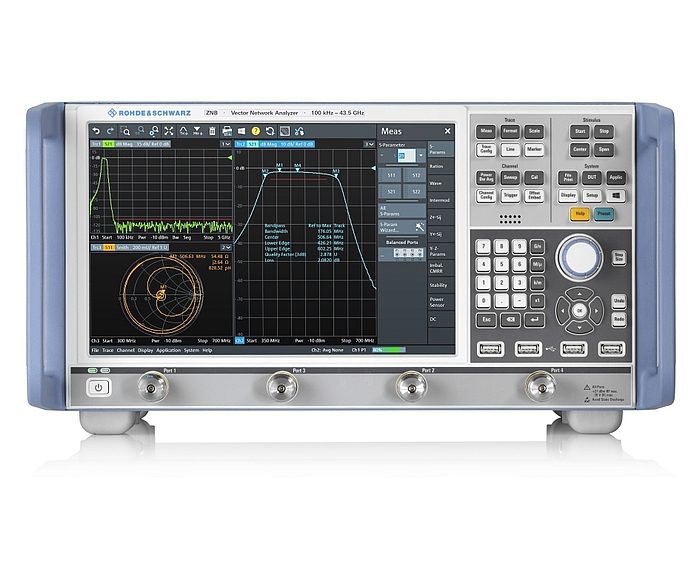- Rohde & Schwarz is expanding its R&S ZNB family of vector network analyzers with new models and options to meet the requirements of millimeter-wave applications such as 5G communications in the FR2 frequency band and aerospace and defense applications in the Ka band.
- The R&S ZNB26 and R&S ZNB43 have network analysis capabilities up to 26.5 GHz and 43.5 GHz respectively.
The R&S ZNB43, which covers a frequency range from 100 kHz to 43.5 GHz, is available as 2 port or 4 port models, with two connector types, either 2.4 mm or 2.92 mm. It also offers optionally an extended power range and a second internal source. This midrange vector network analyzer (VNA) is suitable for characterization of passive devices such as filters, couplers, and switches. When equipped with the second internal source, it becomes a versatile instrument for measurements of active devices such as mixers and amplifiers.
Higher frequencies, faster clock rates, and more precise specifications all demand more accurate device characterization. In particular for the higher microwave frequencies, de-embedding the test fixture from the device under test is increasingly important. According to Rohde & Schwarz, while simple in principle, de-embedding is much more complicated in practice, as the S-parameters for the fixture cannot easily be measured. Only in the past few years have practical de-embedding solutions come to the market. For many Rohde & Schwarz network analyzers including the R&S ZNB family, a range of software tools for de-embedding in line with IEEE 370 are now available as fully integrated options.
With any network analyzer, no matter how well a test setup has been calibrated, there will still be a residual measurement uncertainty which will vary according to settings such as the power level for the current test. Knowing the actual uncertainty under given test conditions is crucial. The R&S ZNB allows users to keep track of measurement uncertainty in real-time, with integrated software options.
The R&S ZNB family also supports inline calibration units which remain connected to the device under test throughout the test period. Inline calibration is essential for tests in a thermal chamber for example on satellites or satellite components. Or in multiport setups with large numbers of ports, where instead of a time-consuming reconnection of DUT cables, recalibration is reduced to just pressing a button on the R&S ZNB.






